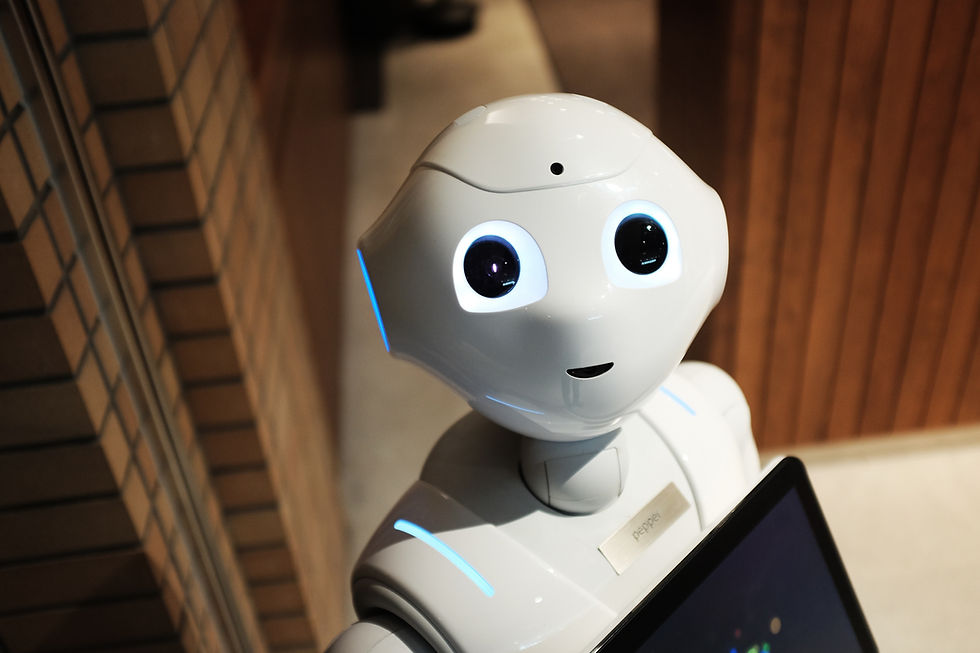Digital Twins: Bridging the Billion-User Data Divide in India
- Tanya Bisht
- Jan 5
- 4 min read
Updated: May 27

Picture trying to design a financial service that works equally well for a small shop owner in Indore managing daily cash flows and a tech professional in Bangalore planning long-term investments. That's the challenge businesses face when attempting to personalize digital services in India. But what if you could create virtual users to test your solutions before launching in the real world? Welcome to the world of digital twins and synthetic users – the arguably key ingredient to cracking India's personalization puzzle.
The Great Indian Data Paradox
India's digital revolution is a paradox wrapped in a mystery. On one hand, you have 750 million smartphones pinging away across the subcontinent. On the other, you have businesses struggling to understand their users. It's like building a bridge without knowing the depth of the river or the strength of the current.
The challenge? India isn't just a market – it's hundreds of markets rolled into one. Consider the stark contrast: a small-business owner in Gujarat who needs inventory management in Gujarati with traditional accounting terms, versus a gig worker in Hyderabad who needs quick access to earnings in Telugu with modern banking interfaces. These aren't just different user preferences – they're entirely different digital worlds.
Why Traditional Data Collection Hits a Wall
Traditional data collection in India faces challenges that would make even the most seasoned data scientist pause. Take healthcare apps, for instance. A user survey in metropolitan Mumbai might show a preference for English interfaces and appointment scheduling. But roll out the same app in rural Maharashtra, and you'll find users struggling with both language and the fundamental concept of preventive healthcare appointments.
The cost of comprehensive user research across India's diverse landscape is prohibitive. Fintech company can spend months and significant resources conducting user research across states, only to realize their findings were outdated by the time they implemented changes. Add to this the inherent trust issues around sharing personal information, and you've got yourself a data desert in the middle of a digital oasis. To bridge this gap, we can look towards innovative solutions like synthetic users—digital twins that hold real potential for transformation. But what exactly are they?
Synthetic Users: Digital Twins To Create Real Impact
Synthetic users represent a paradigm shift in how we understand and test digital products, transcending traditional data collection methods. Think of them as sophisticated digital actors in an elaborate virtual theater, each programmed to perform countless interactions with your product while carrying unique cultural DNA, behavioral patterns, and user preferences. Imagine creating a virtual version of Raj, a 45-year-old small shop owner in Jaipur. This digital twin isn't just a collection of demographic data – it's a dynamic simulation of Raj's behavior, complete with:
His preference for Hindi interfaces with English numerals
His peak usage times (early morning and late evening, matching his shop hours)
His typical transaction patterns (frequent small-value UPI transactions)
His tech comfort level (comfortable with basic smartphone features but skeptical of advanced options)
Now multiply this by thousands, each representing different user archetypes across India's diverse landscape. These aren't just static profiles – they're intelligent simulations that can interact with your product millions of times, generating valuable usage data before you ever reach real users.
Making It Work: From Concept to Reality
Creating effective digital twins for the Indian market requires a sophisticated blend of data science and cultural understanding. Here's how it works:
Base Layer: Start with foundational demographic data about age, location, income levels, and digital literacy. For example, a synthetic user might represent a 35-year-old female teacher from a tier-2 city in Tamil Nadu.
Behavioral Patterns: Layer in typical usage patterns based on profession, daily routines, and regional preferences. Our teacher might check educational content in Tamil during lunch breaks and handle financial transactions in the evening.
Cultural Context: Add cultural nuances that influence digital behavior. During festival seasons, shopping patterns change dramatically. A synthetic user from West Bengal might show different behaviors during Durga Puja compared to regular days.
Economic Factors: Incorporate regional economic realities. A synthetic user from Mumbai might have different spending thresholds and transaction frequencies compared to one from rural Madhya Pradesh.
The Road Ahead: Future Perfect(ing)
As synthetic user technology evolves, I see exciting possibilities across domains:
Healthcare: A telemedicine platform can use synthetic users to test their emergency care interface. They might discover that their "straightforward" symptom reporting system was too complex for semi-literate users. By simulating various user types, they can then develop a voice-based interface that reduce reporting time by 70%.
Financial Inclusion: A bank can use digital twins to test their rural banking app. Synthetic users representing farmers can help them understand that their loan application process, while perfect for urban users, was impractical for rural users with intermittent internet connectivity.
Education: An EdTech company can deploy synthetic users representing students from different boards (CBSE, state boards) to test their content delivery. This can lead to the development of dynamic content paths that adapt to different learning styles and curricular needs.
The Final Byte
In a country where digital inclusion could mean the difference between accessing essential services or being left behind, synthetic users are more than just a testing tool – they're a bridge to better digital experiences for all Indians. Whether it's a farmer checking crop prices in Karnataka or a student accessing online education in Assam, digital twins are helping create products that truly understand and serve their users.
As we move forward, the key lies in using this technology not just to create better products, but to ensure digital India truly means digital inclusion for all. After all, in a nation as diverse as ours, understanding users isn't just good business – it's essential for progress.



Comments